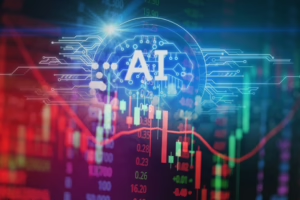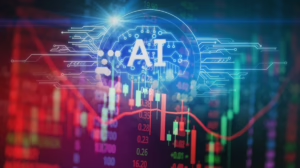The Evolution of AI News from OpenAI: Transforming the Landscape of Artificial Intelligence
Introduction
Artificial intelligence (AI) is no longer a futuristic concept confined to science fiction; it has become a mainstream technology that is reshaping industries and environments across the globe. OpenAI is at the forefront of this transformation, playing a pivotal role in advancing AI technologies. In this article, we will delve deeply into the evolution of AI news from OpenAI, the technologies they have developed, the implications for businesses, and the ethical considerations surrounding AI implementation.
Chapter 1: The Genesis of OpenAI
OpenAI was founded in December 2015 with the mission to ensure that artificial general intelligence (AGI) benefits all of humanity. Co-founded by Elon Musk, Sam Altman, Greg Brockman, Ilya Sutskever, and Wojciech Zaremba, OpenAI started as a non-profit organization but later transitioned into a "capped-profit" model to attract larger investments while still prioritizing its ethical mission.
1.1 Initial Milestones
In its early years, OpenAI focused on developing cutting-edge technologies and conducting research in the AI sector. The organization released several key papers and models, laying the groundwork for future developments. For instance, their research on reinforcement learning and neural network architectures provided critical insights into machine learning.
1.2 Significant AI Models
The launch of the OpenAI Gym and the OpenAI API laid the foundation for developers and businesses to harness the power of AI. These platforms enabled systematic experimentation and application of AI, fostering innovative uses across various sectors.
Chapter 2: Advancements in Language Models
One of OpenAI’s most significant contributions has been the development of advanced language models, most notably the Generative Pre-trained Transformer (GPT) series.
2.1 GPT-1, GPT-2, and GPT-3
The release of GPT-1 in 2018 was a significant milestone. It was capable of performing specific tasks, but it couldn’t generate highly coherent text. The subsequent release of GPT-2 in 2019 took a giant leap forward, boasting improved coherence and versatility. GPT-3, launched in 2020, further pushed the boundaries with 175 billion parameters, enabling it to understand context, generate human-like text, and perform various language-based tasks effectively.
2.2 Use Cases in Business
The applications of GPT-3 in business have been vast, from content generation, customer service automation, to data analysis. Companies are harnessing these capabilities to streamline operations and enhance user experiences. The implementation of AI-driven chatbots and content creation tools has proven to be a game-changer for many organizations.
Chapter 3: Current Developments in AI News
3.1 OpenAI’s Latest Initiatives
As of 2023, OpenAI continues to innovate, recently unveiling GPT-4. This model has exceeded its predecessors in various aspects, such as efficiency, contextual understanding, and adaptability to specific tasks. The release of this model has sparked discussions on the potential capabilities and applications of AI in both commercial and academic sectors.
3.2 Collaborations and Partnerships
OpenAI’s collaborations with businesses like Microsoft have further accelerated the adoption of AI technologies. The integration of OpenAI’s models into Microsoft’s products, such as the Azure cloud platform, has broadened the accessibility of sophisticated AI tools to developers, businesses, and researchers.
3.3 Community Engagement and Open Source
OpenAI has also placed significant emphasis on community engagement. The organization encourages developers to experiment with its models, fostering innovation and collaboration within the tech community. OpenAI’s commitment to sharing knowledge as an open-source initiative has proven essential in democratizing AI technologies.
Chapter 4: The Business Implications of AI
The integration of AI technologies into business processes is revolutionizing industries. From automating mundane tasks to enhancing decision-making processes, AI is driving efficiency, productivity, and innovation.
4.1 Cost Efficiency and Scalability
Businesses have recognized the potential of AI to cut expenses and scale operations. Automation of routine tasks allows companies to allocate resources to more strategic initiatives. For instance, AI-driven data analysis tools enable firms to derive valuable insights without the need for extensive human intervention.
4.2 Enhanced Customer Experiences
AI personalization capabilities are transforming customer experiences. Businesses can leverage data to tailor products and services based on customer preferences and behaviors. This results in increased customer satisfaction and loyalty, essential components in today’s competitive landscape.
4.3 Challenges and Adaptation
Despite the numerous benefits, businesses face challenges in implementing AI solutions. Issues such as data privacy, algorithmic bias, and workforce displacement are significant concerns. Companies must navigate these challenges to harness the potential of AI responsibly.
Chapter 5: Ethical Considerations in AI
As AI technology advances, concerns surrounding its ethical implications grow. OpenAI’s commitment to ethical AI practices is a critical aspect of its mission.
5.1 The Bias Problem
One of the significant challenges facing AI models is the bias inherent in the training data. If the data contains biases, the AI will likely reproduce and exacerbate those biases. OpenAI has invested effort into understanding and mitigating bias, although the issue remains complex and multifaceted.
5.2 Privacy Concerns
The use of AI in analyzing vast amounts of personal data raises significant privacy concerns. Businesses must prioritize data protection and comply with regulations to maintain customer trust and ensure compliance.
5.3 Transparency and Accountability
Consumers and stakeholders are increasingly demanding transparency in AI processes. OpenAI actively advocates for transparency in its algorithms, policies, and methodologies. Ensuring accountability in AI applications is essential to build public trust in these technologies.
Chapter 6: The Future of AI with OpenAI
The future of AI is bright, and OpenAI’s role in shaping this landscape cannot be overstated. As we look ahead, several trends and developments will likely dominate the conversation surrounding AI.
6.1 Advancements in Generative AI
The rise of generative AI will likely result in exciting advancements across various sectors, from art and entertainment to research and development. OpenAI is experimenting with various models to push the boundaries of what generative AI can achieve, exploring creative avenues that have yet to be defined.
6.2 Collaborative AI and Human-AI Interaction
The focus on human-AI collaboration will intensify, with tools designed to assist rather than replace human efforts. As AI continues to evolve, the collaboration between humans and machines will become more seamless, augmenting decision-making and problem-solving processes.
6.3 Regulatory Landscape
As AI technologies proliferate, the establishment of a robust regulatory framework will become crucial. Balancing innovation with ethical standards poses challenges, and OpenAI aims to lead discussions around developing responsible AI guidelines.
Conclusion
OpenAI has been a pioneer in the realm of artificial intelligence, pushing the boundaries of innovation while advocating for ethical practices. The organization’s journey is marked by significant milestones, the development of powerful models, and a commitment to ensuring that AI benefits all of humanity. As businesses continue to adopt AI technologies, the implications for efficiency, productivity, and ethical considerations must be thoroughly understood. The future of AI promises exciting developments, with OpenAI at the helm, shaping a world where AI and humanity can co-evolve harmoniously.
In this rapidly evolving landscape, staying informed on AI advancements is essential for individuals and businesses alike. OpenAI’s ongoing contributions will be central in defining how AI integrates into our lives, reinforcing the notion that the future of artificial intelligence holds immense potential.
Modern Footnote Source
For further insights and updates on OpenAI’s research and developments, readers are encouraged to explore the official OpenAI research publications and news releases.
Click here and see the Source

























Add Comment